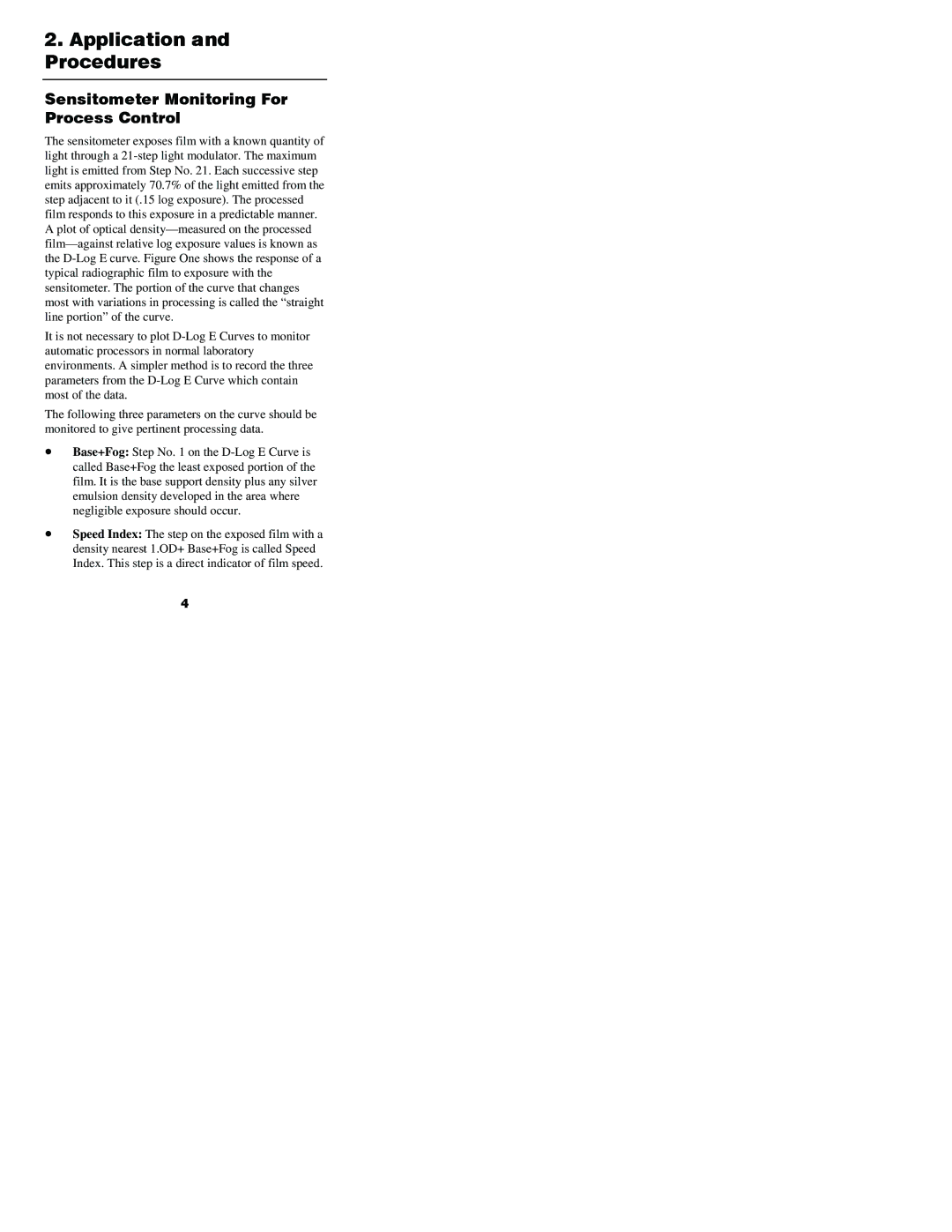
2.Application and Procedures
Sensitometer Monitoring For Process Control
The sensitometer exposes film with a known quantity of light through a 21-step light modulator. The maximum light is emitted from Step No. 21. Each successive step emits approximately 70.7% of the light emitted from the step adjacent to it (.15 log exposure). The processed film responds to this exposure in a predictable manner. A plot of optical density—measured on the processed film—against relative log exposure values is known as the D-Log E curve. Figure One shows the response of a typical radiographic film to exposure with the sensitometer. The portion of the curve that changes most with variations in processing is called the “straight line portion” of the curve.
It is not necessary to plot D-Log E Curves to monitor automatic processors in normal laboratory environments. A simpler method is to record the three parameters from the D-Log E Curve which contain most of the data.
The following three parameters on the curve should be monitored to give pertinent processing data.
•Base+Fog: Step No. 1 on the D-Log E Curve is called Base+Fog the least exposed portion of the film. It is the base support density plus any silver emulsion density developed in the area where negligible exposure should occur.
•Speed Index: The step on the exposed film with a density nearest 1.OD+ Base+Fog is called Speed Index. This step is a direct indicator of film speed.
